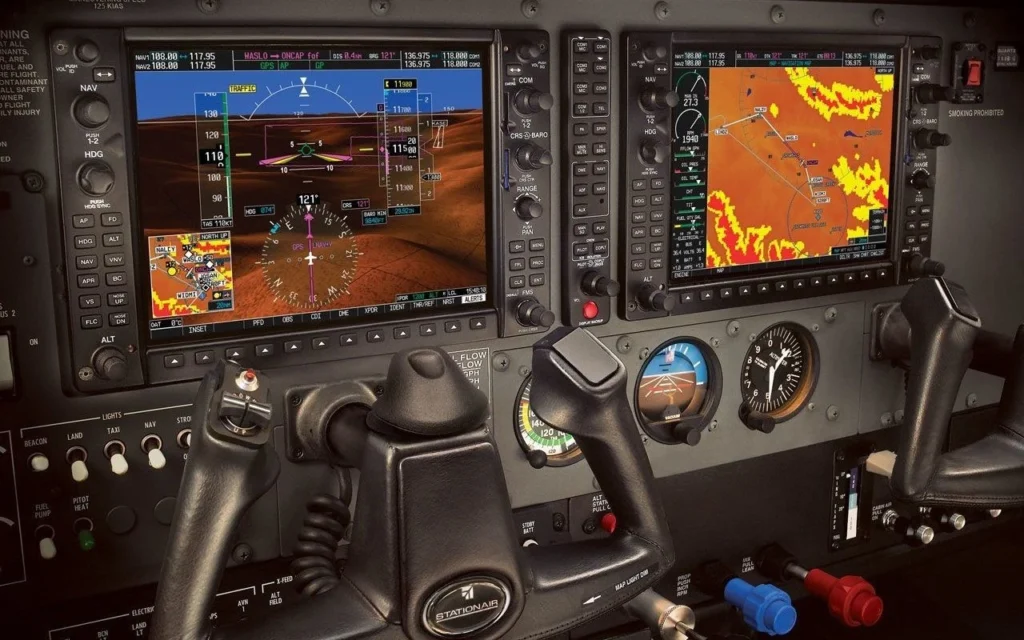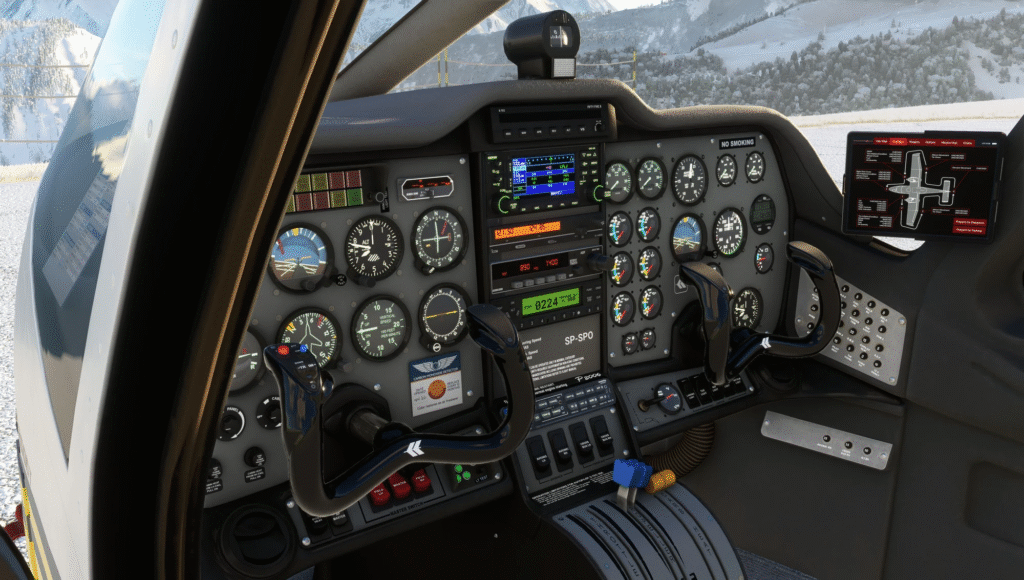The cockpit you fly in shapes how you think, react, and fly. Today, most student pilots are trained using glass cockpits—sleek, digital, and data-rich. But aviation didn’t start here. For decades, pilots flew confidently using traditional analog instruments (often called “steam gauges”). As a student pilot, understanding both systems is vital—not just for passing exams, but for becoming a versatile, safe pilot.
At Eazy Pilot, we ensure our students are proficient with both glass and traditional panels. This blog explains the differences, advantages, limitations, and why this knowledge matters to you.
Glass Cockpit (Electronic Flight Instrument System – EFIS)
A digital display system using screens (usually LCD or LED) to show all flight, navigation, and engine data.
Examples:
- Garmin G1000
- Airbus A320 EFIS/ECAM
- Boeing 737 MAX PFD/ND

⚙️ Traditional Instruments (“Steam Gauges”)
Analog dials driven by mechanical or pneumatic systems, each serving a single function.
Examples:
- Altimeter
- Heading Indicator
- Turn Coordinator
- Airspeed Indicator
- Artificial Horizon

Benefits of Glass Cockpits
1. Increased Situational Awareness
- Combines altitude, airspeed, heading, vertical speed, and more on one screen (PFD).
- Offers real-time traffic (ADS-B), terrain, and weather overlay.
2. Reduced Workload
- Flight Management System (FMS) integration simplifies navigation, performance, and fuel calculations.
- Autopilot sync and route programming reduce repetitive tasks.
3. Cleaner Data Presentation
- No scanning across multiple gauges.
- Alerts and color-coded data reduce interpretation errors.
4. Advanced Alerts & Diagnostics
- Glass cockpits provide system failure alerts and even suggest corrective actions.
- Some even have self-checking systems or circuit monitoring.
Challenges of Glass Cockpits
1. Over-Reliance on Automation
- Students may become “screen watchers” rather than “aircraft managers.”
- Losing automation or display due to electrical failure can leave you unprepared if not trained properly.
2. Loss of Basic Flying Skills
- Glass flying reduces the habit of scanning and interpreting raw data.
- Manual flying and backup instrument interpretation may suffer.
3. Mode Confusion
- Navigating multiple modes of FMS, autopilot, or data pages can overwhelm early-stage pilots.
- Mistakes in inputs = mistakes in navigation.
Benefits of Traditional Instruments
1. Foundational Flying Skills
- Teaches essential scan patterns and instrument interpretation.
- Builds a deeper understanding of basic flight mechanics.
2. Simplicity and Reliability
- Less susceptible to total system failure.
- Mechanical instruments are immune to digital glitches or software bugs.
3. Essential for Emergency Training
- Many emergencies (electrical failure, alternator failure) require you to fly “steam-only.”
- You must rely on the “6-pack” for backup, even in a glass cockpit aircraft.
What Student Pilots Must Learn
- Don’t Let Technology Fly the Plane for You
Use automation as a support, not a substitute. - Know Both Systems Cold
Whether you start on G1000 or steam gauges, you’ll likely fly both at some point—transition readiness is key. - Practice Partial Panel Flying
Learn how to fly with failed PFDs, lost attitude indicators, or pitot-static failures. Use backup instruments confidently. - Know How to Interpret Raw Data
Even in a glass cockpit, the system gets its data from traditional sensors. Understand how and why it works.
In today’s aviation world, technology is an aid, not a replacement for good piloting. A great pilot doesn’t choose between glass or steam—they master both.
Join Eazy Pilot Ground Classes and gain hands-on knowledge in cockpit systems, navigation techniques, and emergency readiness. Because when your screens go dark, your skills light up.
Want more aviation insights like this? Subscribe to our blog or follow us on Instagram @eazypilotindia for weekly content on flight training, career tips, and aviation news.